Underwater Weaving
What began as a simple, nostalgic gesture, Underwater Weaving has grown into a cultural movement—reviving basketry with beauty, intention, and modern relevance.
We spoke with Erin Pollard, founder of Underwater Weaving, about her journey from fashion publishing to reimagining basketry as a timeless, intentional craft that bridges tradition and modern design.
Interview EMILY PETRUCCIONE
Introduction NICOLE GAVRILLES
Images courtesy of UNDERWATER WEAVING
A stack of "Love Baskets" at my home in Brooklyn: Clara Pafundi
ORIGIN STORY
I really loved hearing about your journey—from growing up surrounded by creativity to building a career in fashion and editorial, and now leading a weaving studio that feels both deeply traditional yet forward-looking. Let’s start at the beginning—who was Erin as a child, and what shaped your early creative spirit?
Thank you for taking the time to talk with me. It’s such a full circle moment because I’ve admired the very intimate lens of ONE for so many years.
Okay, my answer– I remember feeling the same as a child as I do now, which I think is a blessing; there have been times in life when I felt far from that kid.
When I was young, I felt free and supported. Creative, curious, and passionate– and I loved performing! I was able to pick up movement and mimic vocal styles quickly. I became very interested in serious dance training and loved finding ways to take the foundations of tradition to create something new. It was also the MTV era. I had a window into the world from my small town. I studied ballet, taught hip hop, and aspired to be on the Grind (Laughs) — I did eventually make it onto an episode!
The general sentiment where I grew up was that if you were born there, you would never leave, but I was always very driven to do so. I questioned everything. I still do. I think now I would identify as a creative pragmatist– A problem solver, but one that values beauty. I think this lends itself to basketmaking and what our studio is doing: honoring technique, creating new designs, but also maintaining values and work ethic that lead to a sound business.
Before baskets entered the picture, you were working in the fast-paced worlds of Harper’s Bazaar, Goop, Condé Nast, and Vogue. What was that chapter of your life like, and what drew you most to it?
I worked in fashion magazine publishing from 2005 to 2022, holding revenue-generating Executive Partnerships roles. I think it was the perfect job and training ground for what I’m doing now. From 2011-2017, fashion magazines were having a comeback before Instagram ate the editor, and I learned so much. It was also fun. Studying and learning from the French, Italian, and American fashion houses that shaped the industry was a gift, as I had a keen interest in the inner workings of fashion, design, marketing history, travel, and business relationships. Eventually, I outgrew the job, and my values and interests shifted. I struggled to transition into management because I’m more of an independent soul, and I’m not very good at math. Other interests crept in, like… raising a family, and I started waking up to the inequities and cyclical waste and competitive blah of fashion in general.
Your mother’s weaving and entrepreneurial spirit runs like a thread through your story. How did her work shape what eventually became Underwater Weaving Studio?
When mom learned to weave in the late 80s and 90’s, there was a distinct, Americana-infused aesthetic happening. Crafting was what you did at home (thank you, Martha). And we lived in a cozy, "country" time marked by mauve, dusty blue, forest green, and burgundy, rustic, stenciled motifs, decorative wooden cut-outs, wholesome repeating wallpaper, and baskets. There was a market for anything that felt historic and handmade. As both of my parents are serial entrepreneurs, it was natural for my mom to open a craft store, sell her baskets, host workshops, and produce for LL Bean. Handcrafts and hard work– it’s in the fabric of a traditional Maine upbringing.
When I first started the studio, I wanted to do the opposite of mom's folk art (loves a rebellion). At the time, I was interested in quietly commenting on culture through weaving or just exploring– it was an unleashing of creativity, and it felt completely my own. I didn’t know anyone weaving baskets, and so it was an avenue for discovery and play; I wanted the work to be entirely exploratory and one-of-a-kind.
But as we started making together, I realized that I could marry the worlds and create things that felt elevated and artistic, but also useful. Mom taught me how to construct things soundly. Her ability to develop patterns and understand construction is unparalleled. In this way, we can build upon the foundations of other hard work, creating shapes and ideas that evoke nostalgia while feeling so well-made and timeless for now. Ultimately, the work draws on Maine’s Wabanaki and Shaker legacy, Mom's Folk Art era, and my experience with dance, design, and a reclaimed connection to the natural world. These influences coalesce into timeless forms that I believe feel grounded yet lyrical, as helpful as they are poetic.
I hope that Underwater Weaving Studio doesn’t just exist as part of a basket trend—it pushes the edges of a longterm return. I want it to lead a cultural movement that honors the handmade, the inherited, and the overlooked.
Maria McManus Spring 2025
You told me a story about your son stumbling upon a bundle of weave under your bed—a small discovery that set so much in motion. Can you take us back to that moment and how it catalyzed the brand today?
Yes! I had a coil of reed under my bed in Montauk, and my son asked me what it was. I wove him a basket from memory (I used to watch mom teach from the top of the basement stairs). Weaving that first basket unlocked something. Thinking back to that summer, a lot of things may have collided to connect me so profoundly to the craft– our Montauk garden after years of cultivation went crazy. I was connecting to nature more deeply, coming out of the quiet of the pandemic and having a young child. I was turning 40 and I had begun a meditation practice that was connecting me to the reciprocity of the harvest and to my hands. So while the gesture of the first basket was simple, the feeling it gave me was not. It was a homecoming. A remembering. A quiet revelation that I was meant to shape something—and that the act of weaving could become a path, a purpose, a way of re-rooting.
I’d liken it to learning a language that connected me to my past– my mother and to the long lineage of makers whose knowledge shaped a tradition, an art, a trade, and my future.
FIRST CREATIONS & DESIGN APPROACH
Once you began weaving again, what were some of the first pieces you made, and what inspired those initial creations?
At first, everything was an experiment inspired by my life experiences, what I felt and what I saw. I would weave everything from leather scraps to grapevines. I tested different materials and techniques, added ribbons, twined vegetables, created stripes, made basket bikinis, you name it. A woven vase would become a hat, a wall bouquet, then a bread basket. It was wildly fun. And no one was paying attention, so it just felt like a little inside joke with myself.
The name Underwater Weaving Studio is both poetic and practical—referring to soaking materials to make them supple, but also reclaiming a phrase with cultural history. How did you decide on the name, and what does it mean to you?
Yes, our name itself is layered: rooted in the literal process of soaking weaving materials to make them supple, while also nodding to a phrase historically used to undermine vocational learning and domestic labor. I chose the name for its inherent humor, for its versatility, and its potential. I felt that by embracing “underwater basket weaving,” I could turn what was once a punchline into a statement—one that centers softness, beauty, and slowness as sources of power. We recently acquired the ™ for the name, which feels exciting!
Coming from traditionally fast-paced industries, how do you now approach a slower, more intentional craft? What was that transition like for you?
Frankly, my life hasn’t become slower! Creating a business out of anything means that you’re constantly problem-solving and creating. My father and husband joke that Underwater Weaving Studio is a 24-hour operation. I agree, but we are passionate about what we’re doing, it doesn’t feel like work to us; It’s a thrill.
Intentional, yes – the difference between my approach now and then is a sense of respect and acknowledgement, and respect for how things are made and the life cycles of everything I come into contact with. This appreciation and gratitude guide my life decisions, from choosing to stop drinking alcohol to eating fish only when I know the fishermen, to wearing vintage or responsibly made clothing whenever possible, and from a business standpoint, choosing the recycled paper over the glossy, keeping things simple, etc. The basket, made from a plant, aligns perfectly with my values.
“It was a homecoming. A remembering. A quiet revelation that I was meant to shape something—and that the act of weaving could become a path, a purpose, a way of re-rooting.”
Portrait of Erin and Peggy in the Maine Studio: Julie Pointer Adams
SUSTAINABILITY & MATERIALS
For those unfamiliar, can you explain the difference between wicker, reed, and rattan—and how each lends itself to your creations?
Wicker is often confused as a material, but it is historically a technique– a style of basket made by twisting strands of rattan (cane or rattan core). Most of our baskets are made via plaiting (an over-under-over technique). I refer to our baskets as rattan and reed interchangeably. The species of plant is Calamus Rotang, and it grows in Indonesia–it doesn’t grow in the US, unfortunately, but we are supporting local farmers there, and the quality we receive is unparalleled. The company we work with in Connecticut was founded in 1917 and is run by a family that my mom has known for decades.
You have been vocal about reviving the ash tree in Maine. How do you balance sourcing global materials with a deep commitment to local ecology and craft?
I love to explore using different materials for baskets– from recycled paper to leather scraps to plants. Material exploration is central to my creative process. When I began weaving, I used a lot of Ash splints from a tree native to New England known by the Wabanaki people as the basket tree. The Ash tree is threatened in Maine and other parts of New England because of a pest called the Emerald Ash Borer. I’m working with the University of Maine and at the local level, and I hope to help more broadly if I can. We use rattan over ash for several reasons, but I’m still passionate about our local environment and the basket tree.
Honoring history and weaving traditions is clearly important to you. What are some ways you’re continuing—and hope to continue—this work in the years ahead?
I believe our momentum is closely tied to preserving this craft. For us, that means inviting people into the story, not keeping it at an unattainable distance. It’s why I decided to teach.
If I’m honest, I feel vulnerable teaching something that feels really personal. And sometimes when the work is copied it feels unsettling. But when I see others connect to the feeling of discovery, it’s worth it. There is so much this craft can offer, especially in the wellness space. I would love to more deeply explore the health benefits of the craft.
A recent exploratory work commissioned by toast & Six— Erin teaching an early workshop in Fort Greene Park
“I believe our momentum is closely tied to preserving this craft. For us, that means inviting people into the story, not keeping it at an unattainable distance.”
BIG MOMENTS & BRAND GROWTH
Your baskets began as personal creations, but soon people were asking for them—then names like Maria McManus and Moda Operandi came on board carrying your entire home collection. What was it like to experience that kind of momentum?
My seven-year-old is an existential, sensitive soul, and he asked me yesterday, "Mom, can you see the future? What am I going to be?" The question shook me, but I told him that I knew he would do extraordinary things. And that it doesn’t matter what he does, but he'll know he’s found the future when it feels like he’s most himself, and at home.
I believe that is what people are connecting to. Using our hands to make things is so vital for our well-being. Through this journey, people are telling me that they are finding a sense of homecoming from making, or connecting with a nostalgia for simpler, more handmade times. So whether they are investing in our kits to suspend time and learn something new, or just appreciate the traditions and time it takes to make a basket, it’s a reminder that what we shape by hand can shape us in return.
I’m pinching myself every day, but at the same time, I’ve always felt it. It’s only been 3 years since I started weaving! I trusted that I could work hard and translate my passion for something special into something that others could love too. I’m so grateful for the people who have come along for that journey – from early workshop volunteers to customers to collaborators.
When designing for fashion versus home, do you find yourself shifting your approach, or do the same values carry through both? How do you see the line continuing to evolve?
I don’t think the approach shifts- I might be inspired by a time or place, a nostalgic reference, rarely a modern one, but the best work feels new with an old soul. It seems the more extravagant and weird we go, the better. I don’t want to make baskets that you can find anywhere; I want them to be recognizable, well-made, and hopefully something that has multiple uses in and out of the home. Right now, we’re focused on expanding our finishes, which allows all customers to choose baskets that are personal to them and their home or the season. The beauty of everything we make is that it is timeless. I don’t want to create anything that won’t be passed down through multiple generations (but if it’s not, it’s plant-based and can be composted).
You’ve collaborated with everyone from small farms to fashion houses, and most recently with Autumn Sonata. How do you decide when a collaboration feels right? What do you look for in that creative exchange?
There is so much potential for collaboration with baskets, and by design, ours. I see baskets as carriers for stories. And as many of our pieces can transition seamlessly into different environments, it’s been a joy to come together with various industries, from food to fashion to floral design.I look for collaborations that are true to my own life. Many of the collaborations so far have been people, places, and things I know or love.
CURRENT OFFERINGS & COMMUNITY
Beyond your beautiful baskets, you started a weaving club that feels like a natural extension of your work—a gentle, hands-on entry point into the craft. What inspired you to start it?
(Laughs) The basket weaving world has, let’s say, stayed pretty stagnant for the past oh, 40-50 years. When I began weaving, mom hadn’t woven in 35 years herself, so I taught myself through vintage books, kits and memory of observing mom. But if I had not been familiar with it all, and understood the potential, I would have been completely turned off. So I envisioned creating a new way to experience weaving– a more friendly, beautiful way. To start, I set my expectations low– I thought we’d have maybe 10-12 members, but by our second delivery we were up to 150!
The club delivers bi-monthly kits with rattan, tools, instructions, and a “special detail” tied to the mood of the moment. How do you curate those details so they feel personal and seasonal?
A few ways–first and foremost I want the baskets to be interesting, universal, but unique. All of our patterns are original, our booklets are very thorough and we want to teach new and different techniques each time. But mostly I think the themes come from the seasons and what I am personally inspired by at the time. Rituals, Self Care, Harvest - these themes act as almost a meditation for the moment. We also have been lucky to have Beauty, Skincare, Fashion and Spirits brands come along with us, which I didn’t expect so soon in our journey, but is so rewarding. I have a personal relationship with many of the members now, and so I get their feedback– for so many members, receiving our box is permission to slow down and take time for themselves.
A CULTURAL MOVEMENT
There’s been such a clear basketry revival, but you’ve described it more as “a return” than a trend. Can you tell me more about what that means to you?
The times are weird. In so many ways, it's depressing to have so much information at our fingertips because there is no room for exploration and discovery. When I first started out, it was as if baskets were left behind from the internet (if they were there, I wasn’t finding them). That was sort of awesome. I was able to make real discoveries, read books from the library, dust off old kits, explore techniques and color. Even Pinterest felt like a blank canvas! What is interesting to me is that because of that gap, I/we can be a part of shaping what’s next. I don’t mean in a substack newsletter, social media kind of way, but with real human interaction.
The revival during this particular time in history also naturally carries a threat of overexposure. There are businesses exploiting the work of people overseas, pushing baskets for commerce and trend. But it’s a "disposable–I’ve got to have it, look at me with this basket!” mentality and that will exist as long as we have the factory and mass media. That’s not to say we don’t have fun– I would not have been able to build our community without the internet and social media. But I think we and many other thoughtful makers are the resistance to disposability in a way. The return is not only for baskets, but for the appreciation for growing our own vegetables, chopping the fire wood, churning our own ice cream and in general the slow sweetness of the handmade.
How do you hope the cultural perception of weaving will shift over the next decade?
Over the past several decades, maybe even centuries, we have replaced the thoughtful sturdy basket for the convenience of other fast solutions– inventions deemed culturally progressive. I think so many of the conveniences we’ve been creating are an illusion of progress, that the real point of life is to put our hands to work. To learn and to teach others. With every basket comes an offering. It’s an act of generosity. Perhaps you don’t want to make your own basket. That’s okay, my hope is that the reverence for the practice grows.
My Brooklyn studio: Julie Pointer Adams. On right — Harvest Basket in process for a UWW Step-By-Step Basket Making Kit.
“The return is not only for baskets, but for the appreciation for growing our own vegetables, chopping the fire wood, churning our own ice cream and in general the slow sweetness of the handmade. ”
CLOSING REFLECTION & WHAT’S NEXT
You currently split your time between Maine, New York, and Montauk. In what ways does each setting influence your design inspiration and help shape the brand’s identity?
Yes, I’m very lucky to have these beautiful backdrops for inspiration. I’m very influenced by the unique scenarios and lifestyle for each. I know a lot of design houses make things for certain customers, but I really just design based on what I want to use in each of these places. In Brooklyn, I want polished, timeless baskets for our brownstone in chocolate and midnight and sleek and unique shapes for dinner with friends in the city. In Montauk, its market, garden and throw baskets. Our barn in Maine features oversized rustic beauties, and I carry totes and pack baskets for every day from the studio to the lake.
What are your go-to baskets and how do you use them day-to-day—at home or out in the world?
It shifts depending on where I am and what I’m doing– I use all of them. The one that gets the most use is our Big Shopper. It’s so lightweight but sturdy and strong. It’s really a secret weapon in life. While it’s one of our best sellers, I still think it should be a mandatory item in every household– I think maybe our baskets are too precious, and that they shant be really used, but they are not fussy! The construction is sound and so they really age well.
You’ve got new fashion and home baskets coming—can you share any materials or designs you’re especially excited to explore?
Yes, we’re introducing some new styles and colors that I’m really excited about inspired by NY, Maine and Montauk! Our retro totes have become really popular, and if our first collection was really inspired by summer travel in the 60’s and 70’s– times I long for after watching gram and gramps old super 8’s even though I never lived them! The colors we’re introducing are all inspired by life growing up in Maine in the 90’s– stripes you might see on Lobster Buoys, the color of our camp (in Maine we call our lake cabins camp!) the flannels we wore, the weeds that grow on the highways and breezy visits to the coast. We’re introducing new garden and market baskets to assist with the joys of foraging and harvesting in Montauk. And we have reinterpreted our popular crescent shapes as “City Trugs”. They are so sharp and chic and I envision cool editor friends wearing them!
With collections, events, and publishing all in motion, where do you see Underwater Weaving Studio in the next few years?
So far, every morsel of our existence has been handmade and organic, born of blood sweat and tears of joy! I intend for anything we do to come from that intention. I’m not interested in being on, or creating a hamster wheel–I started weaving to get off one. I think what people are connecting to is our pure passion, and the use of what we have available to us to tell personal stories, create special things and inspire discovery. The basket to me is a hero– a container for stories of nurture and generosity. I know not everyone will get that and they may be interested in very different types of stories. That’s okay, I am happy to quietly rebel with my basket in the garden, at the lake and in the city, and welcome those who wish to join me!
Mom’s hands at our Maine Studio: Julie Pointer Adams. On right — The Crescent Trug Basket in Rustic Pine from the latest collection.
Underwater Waving Studio is an American Basket Atelier rooted in elevated craftsmanship. Specializing in heirloom-quality rattan baskets for beauty and utility today, each handmade design is woven in Maine and Brooklyn by Erin and Peggy Pollard and a small team dedicated to the timeless preservation of ancient craft.
For more information about Underwater Weaving Studio, visit their website. All images courtesy of Underwater Weaving.
YOU MIGHT ALSO LIKE



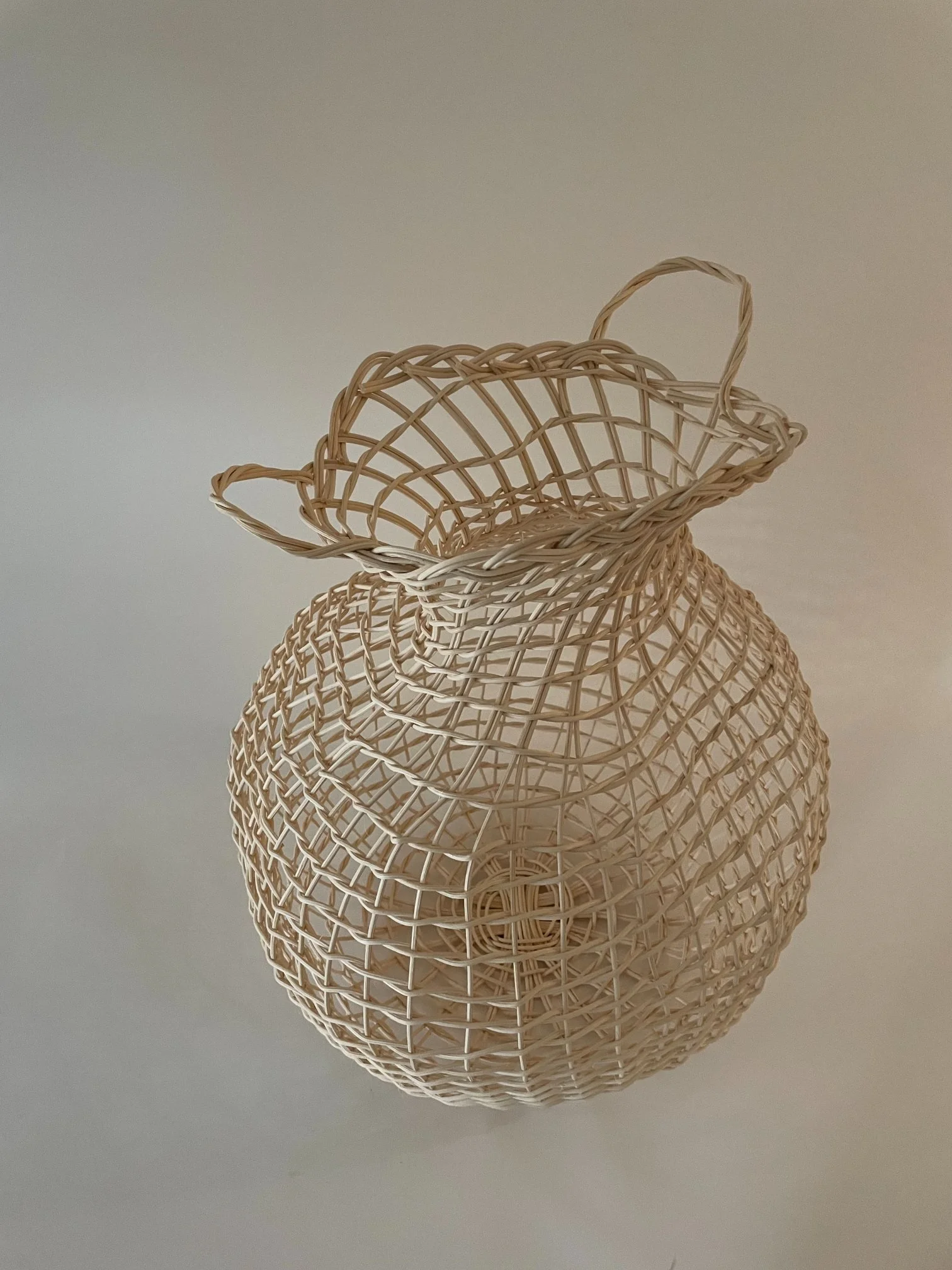
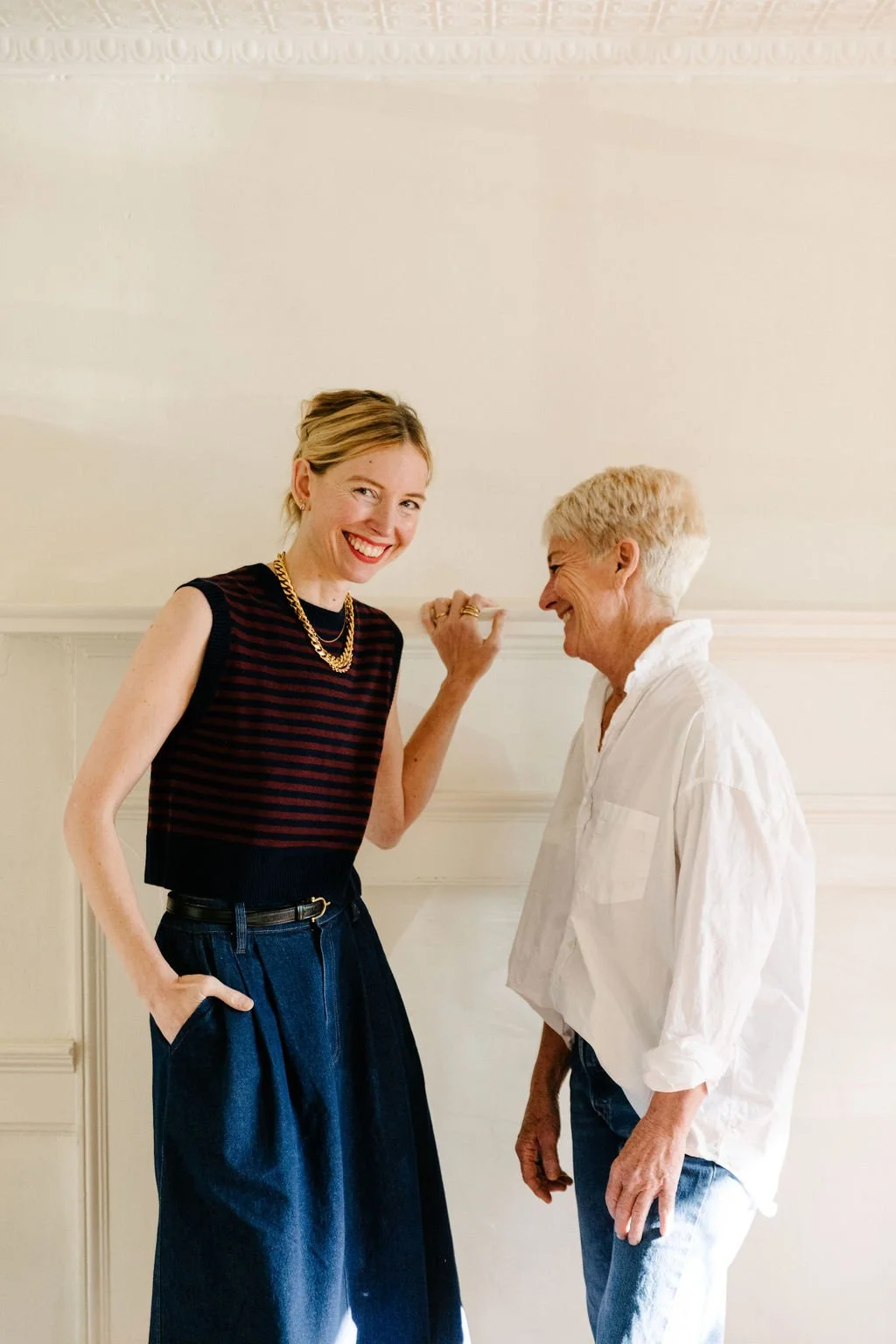


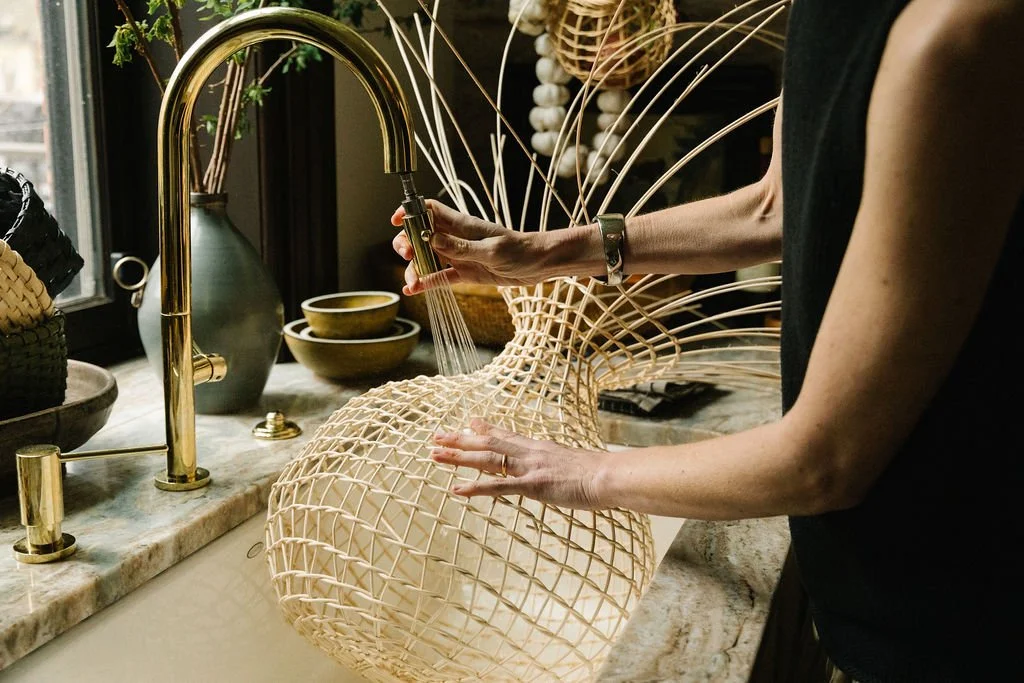


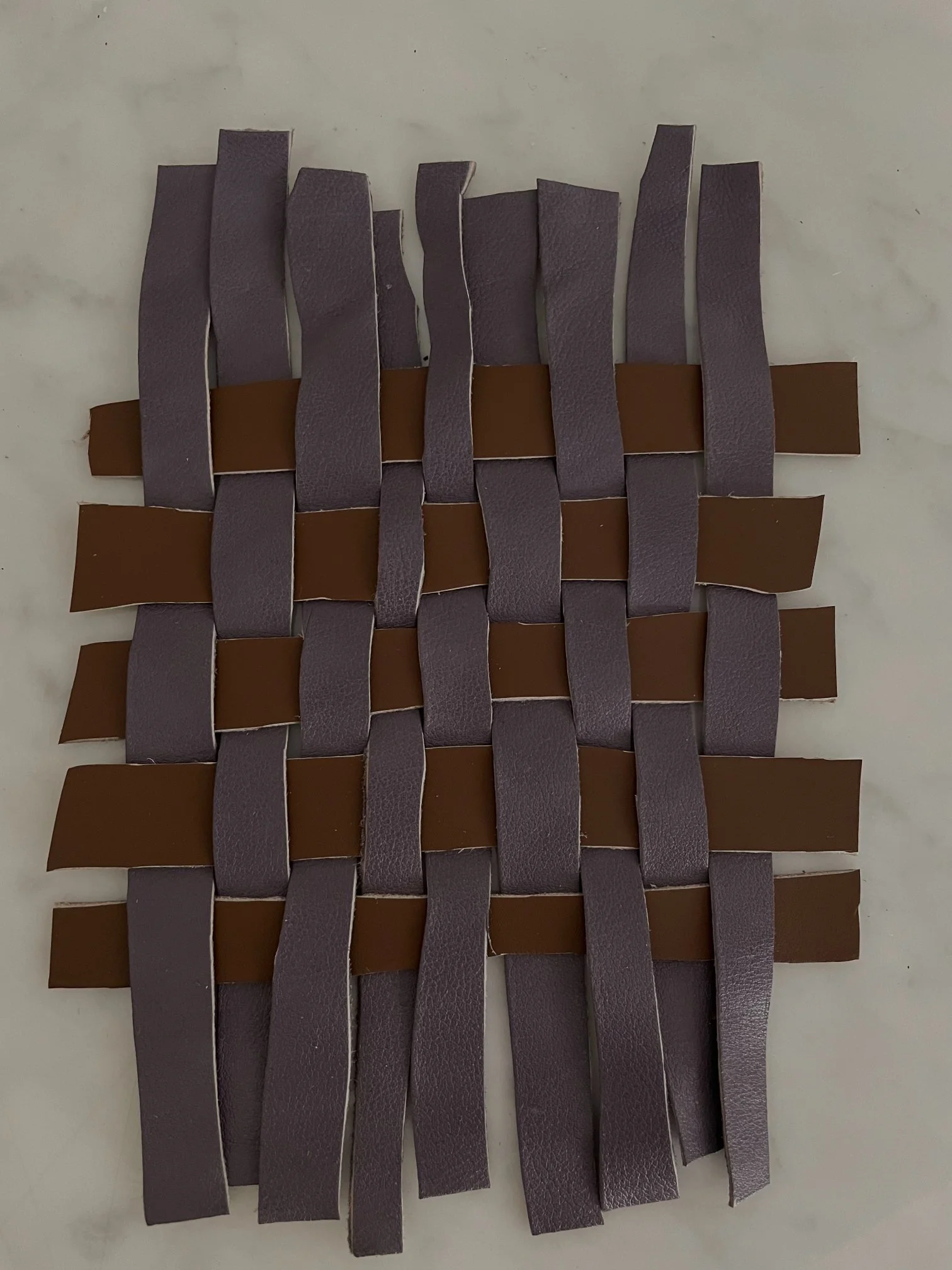
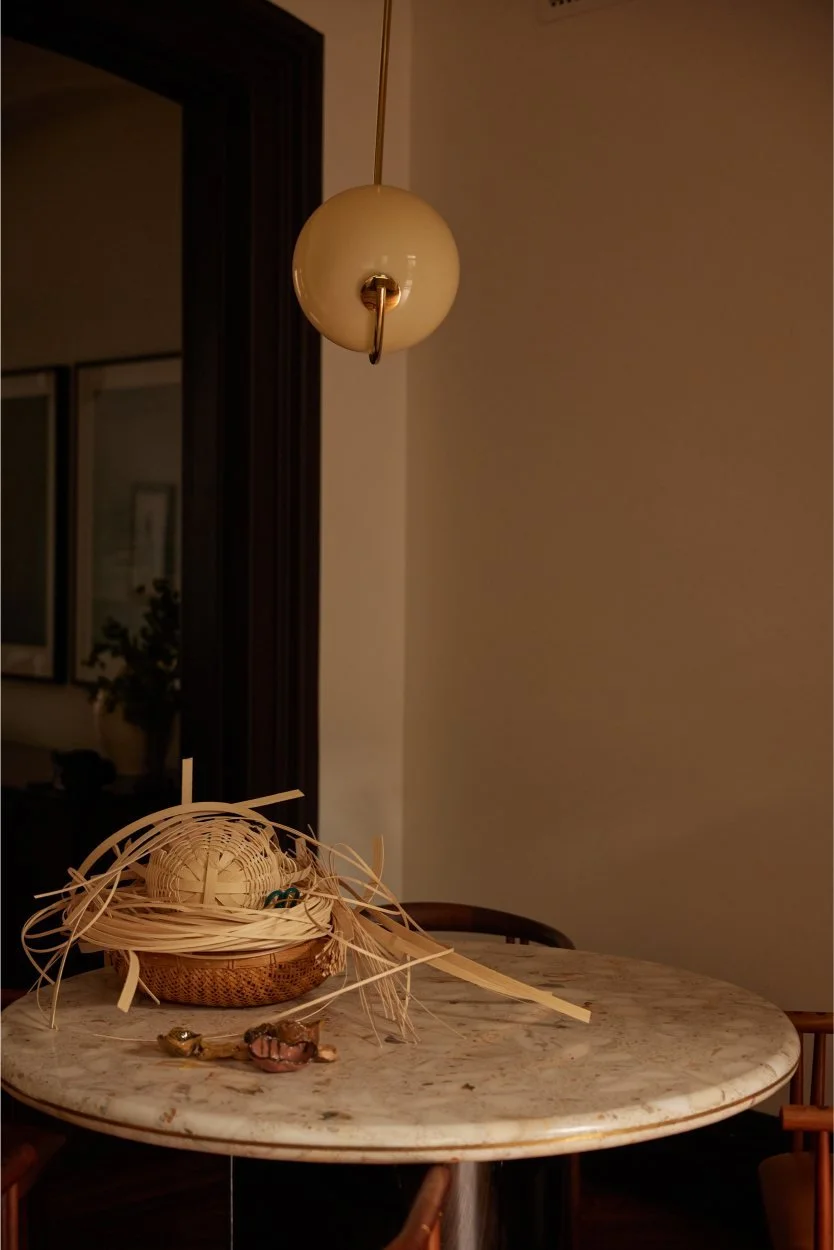



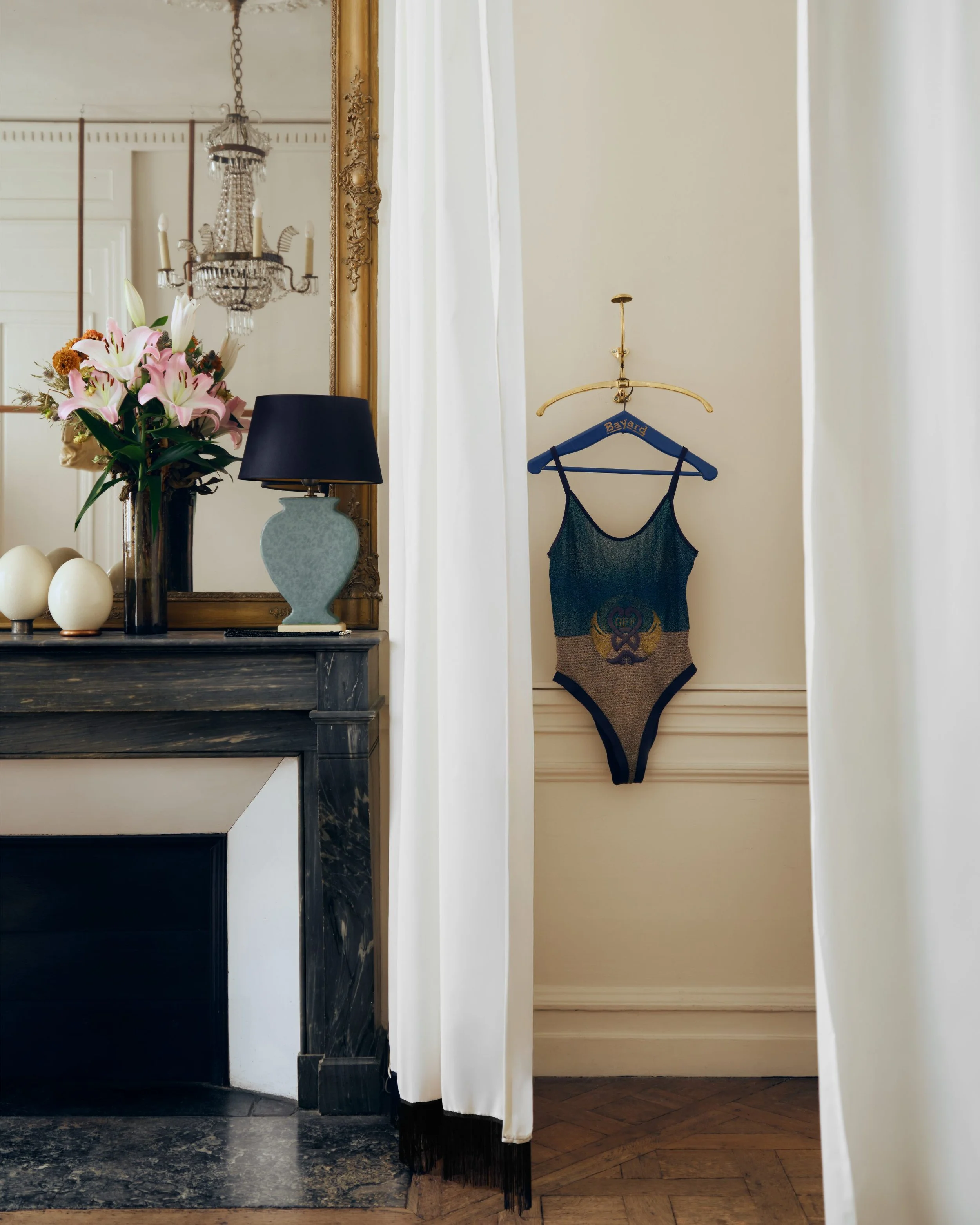


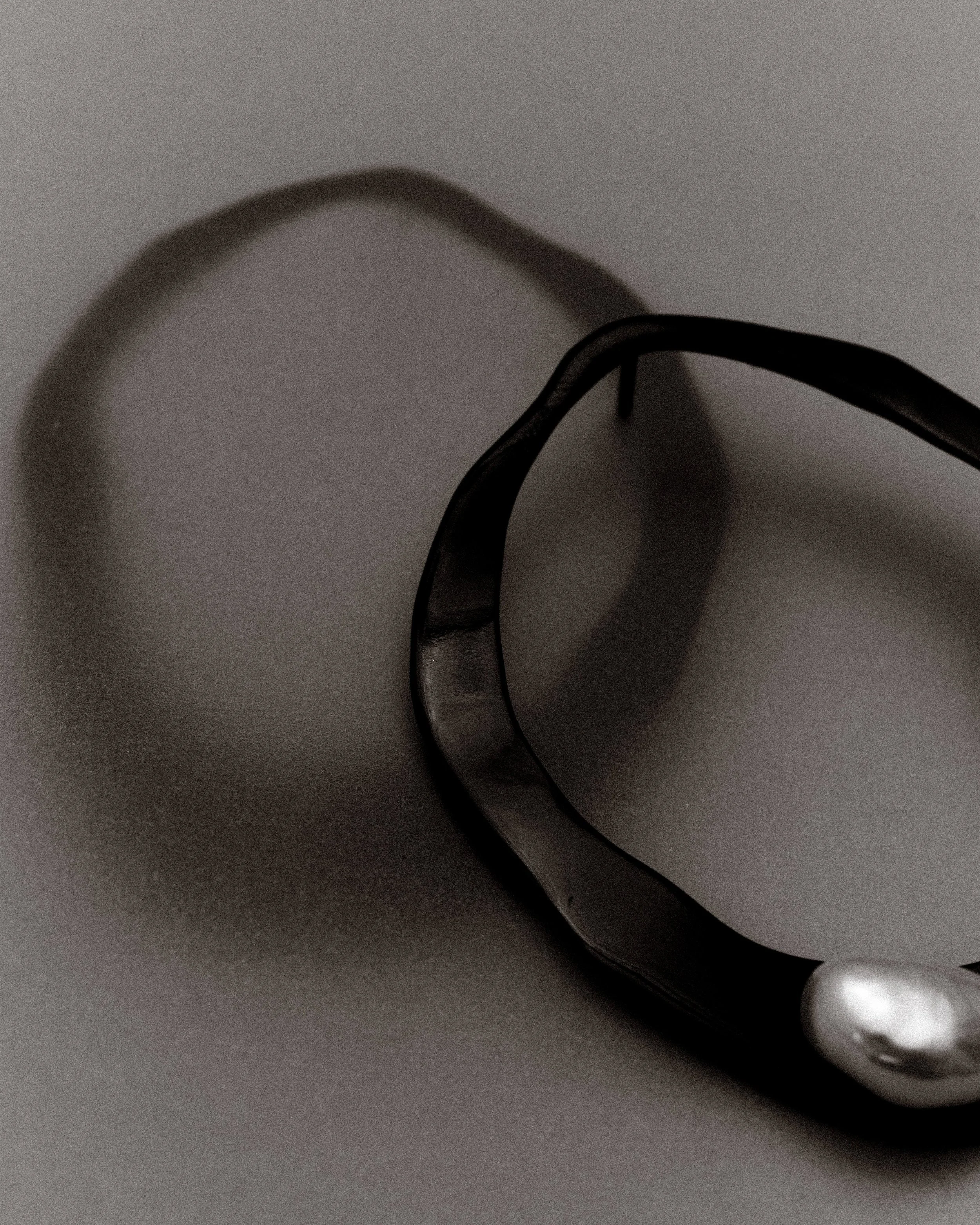


We spoke with founder Erika Geraerts about her mission to challenge conventional beauty narratives through thoughtful design, transparent storytelling, and fewer-but-better products.